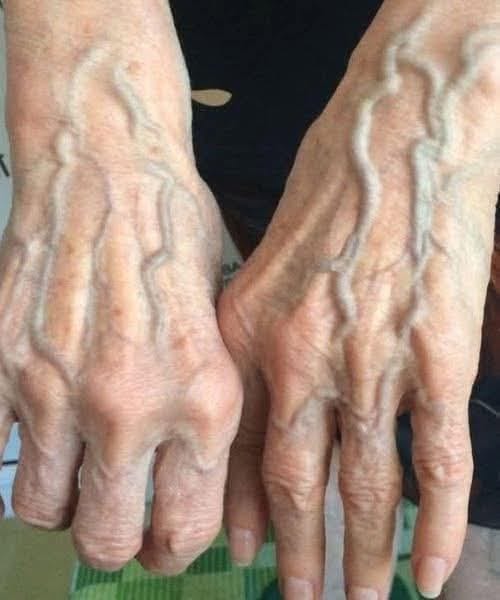Why Veins Become More Visible: The Science Behind Vascularity
Visible veins — often called vascularity — can appear more pronounced for several reasons related to body composition, activity level, temperature, and age. While many people associate visible veins with fitness or low body fat, the reality involves a complex interaction between the skin, muscles, blood flow, and overall health. Let’s explore the main factors in greater depth.
1. Low Body Fat
When the amount of body fat drops — especially around the limbs, shoulders, or torso — the thin layer of subcutaneous fat that typically conceals veins becomes reduced. This allows the underlying veins to appear more defined and closer to the surface of the skin.
Body fat serves as a natural buffer between the skin and the muscles. When that buffer thins, everything beneath becomes more visible: veins, muscle striations, and even subtle vascular branches. This is why professional athletes, bodybuilders, or individuals who maintain a lean physique often have visibly “popped” veins.
However, it’s important to note that genetics also play a role. Some people are naturally more vascular due to inherited traits such as vein size, skin thickness, and how their body distributes fat. In these cases, even moderate fat levels can still result in prominent veins.
2. Exercise and Weight Lifting
During exercise — particularly resistance training, cardio, or high-intensity workouts — blood flow increases dramatically. The heart pumps faster to deliver oxygen to the muscles, causing the veins to temporarily expand, a process known as vasodilation.
As the muscles work harder, they swell with blood, pushing the veins outward and closer to the skin. This is why veins seem to “pop out” during or after a workout — a temporary effect sometimes called “the pump.”
Over time, with consistent training, muscles grow in size, and the circulatory system adapts by building more capillaries to support that muscle tissue. This adaptation means that even at rest, regular exercisers often have more visible veins. Additionally, improved cardiovascular health and lower resting heart rates contribute to better blood flow and vein visibility.
3. Hot Weather
Temperature has a strong effect on vascular appearance. In warm or humid conditions, the body activates mechanisms to regulate internal temperature. One of the most effective ways it does this is through vasodilation — widening the veins and capillaries near the surface of the skin.
This widening allows more blood to circulate closer to the skin’s surface, helping the body release heat more efficiently. The result? Veins become more visible, particularly in the arms, hands, and legs.
You may notice this effect when spending time outdoors in the summer, taking a hot shower, or exercising in a heated environment. It’s temporary and completely normal — once the body cools down, the veins gradually shrink back to their usual state.
4. Aging
As we grow older, the skin naturally loses collagen, elasticity, and fat beneath the surface. This thinning of the skin makes it more translucent, allowing underlying structures — such as veins, tendons, and bones — to show more clearly.
In addition, the veins themselves may become slightly more prominent with age because of reduced vascular tone and changes in circulation. These factors combined can make veins appear more raised or pronounced, even without changes in muscle or fat levels.
Hydration, nutrition, and proper skincare can help maintain elasticity and minimize the visibility of veins, but aging is a natural and unavoidable factor in how our bodies change over time.
In Summary
Visible veins are influenced by a combination of low body fat, exercise, temperature, and aging — along with individual differences in genetics, hydration, and overall health. For some, pronounced veins are a sign of fitness and conditioning; for others, they’re simply a natural part of the body’s physiology.
Whether temporary or permanent, vein visibility is a reflection of how dynamically our bodies adapt — to effort, heat, time, and change. Understanding the reasons behind it not only removes the mystery but also highlights just how responsive and complex the human body truly is.
